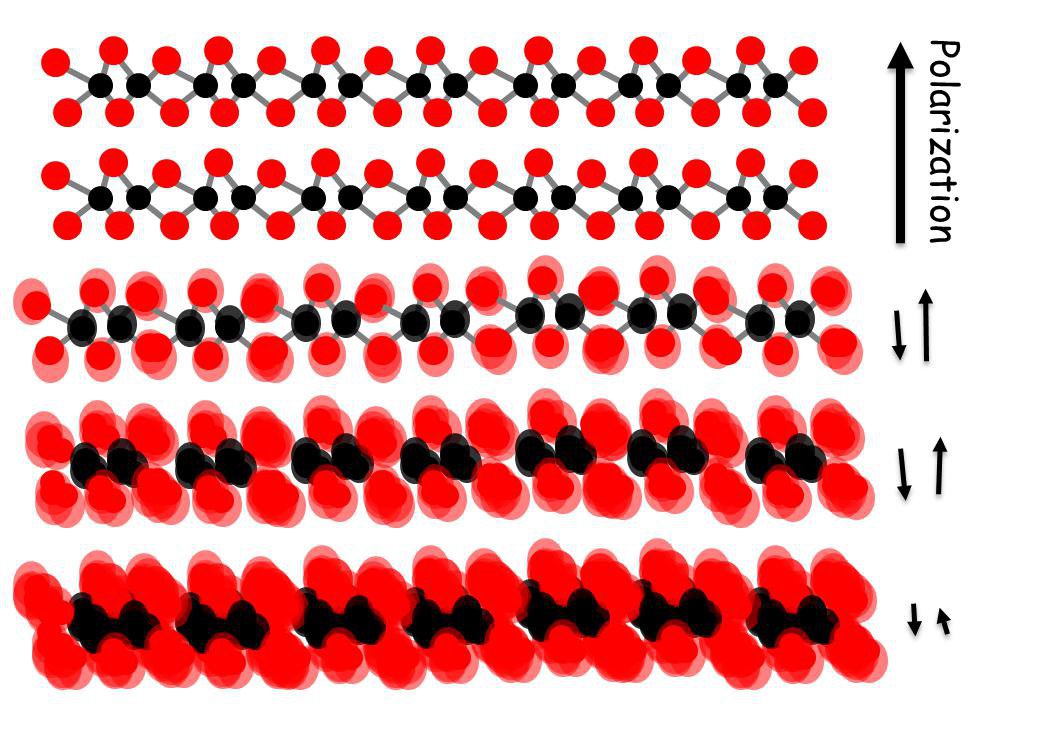A dynamic material with a polar shell
News courtesy of EPFL, first published 12 October 2018
FA new study shows that the phase transitions of the exotic material molybdenum ditelluride – a candidate for future electronics – are more complex than previously thought. First-order phase transitions, wherein an amount of heat is lost or gained by a system, are a part of our everyday lives. A typical example is the freezing of water into ice or boiling of water into steam.

A team scientists led by Hugo Dil at EPFL’s Institute of Physics have now studied how electrons respond to such a first-order phase transition in molybdenum ditelluride (MoTe2), a metal with exotic properties that could be useful for future electronic devices.
The scientists studied the transitions of MoTe2 where its crystal structure changes from one without electric polarization (a measure of the separation of negative and positive charges) to one with electric polarization after cooling the metal down to −23°C. This is a unique phenomenon because electric polarization causes the conducting electrons to orient their spins according to their momentum. The scientists observed this using a technique called spin- and angle-resolved photoemission spectroscopy, which they carried out at the Swiss Light Source.
Physicists generally think of first-order transitions as happening suddenly at the transition temperature (e.g. 100°C for boiling water). But the scientists observed that the electrons near the surface of MoTe2 respond more gradually near the transition, and interact much more strongly than expected with vibrations in the crystal structure. The researchers concluded that, at room temperature, the first nanometers of crystal have an ordered polar structure lying on top of a region of dynamically fluctuating electric polarization. The whole of the crystal becomes ordered only after cooling through the transition.
“This discovery furthers our understanding of the everyday phenomenon of first-order transitions and how electric polarization in materials is switched on,” says Andrew Weber, the first author of the study. “The transition in MoTe2 is clearly more than a simple on-off switch.”
Other contributors
- Donostia International Physics Center
- Forschungszentrum Jülich (Peter Grünberg Institute and Institute for Advanced Simulation)
- National and Kapodistrian University of Athens
Funding
- Swiss National Science Foundation
- NCCR-MARVEL
- Deutsche Forschungsgemeinschaft
- Helmholtz Association (VITI project)
References
Andrew P. Weber, Philipp Rüßmann, Nan Xu, Stefan Muff, Mauro Fanciulli, Arnaud Magrez, Philippe Bugnon, Helmuth Berger, Nicholas C. Plumb, Ming Shi, Stefan Blügel, Phivos Mavropoulos, J. Hugo Dil.
Spin-resolved electronic response to the phase transition in MoTe2.
Physical Review Letters 121, 156401. DOI: 10.1103/PhysRevLett.121.156401